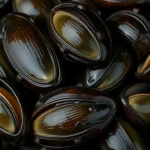
Introduction
Proper dog nutrition is vital to ensure your furry friend’s health and happiness. One key aspect of a balanced diet is the inclusion of wet dog food, which often plays a significant role in a dog’s daily meals. Among the various options available, the best canned wet dog food can provide essential nutrients, hydration, and palatability that many dogs crave. In this article, we will explore the nutritional needs of dogs, the benefits of wet dog food, key factors to consider when choosing it, and a selection of top-rated brands.
Understanding Dog Nutrition
Nutritional Needs of Dogs
Dogs, like humans, require a balanced diet to thrive. Their nutritional needs include macronutrients such as proteins, fats, and carbohydrates, alongside essential vitamins and minerals.
- Proteins are crucial for growth, maintenance, and overall health, serving as the building blocks for muscles, skin, and fur.
- Fats provide energy and help in the absorption of certain vitamins. They also contribute to healthy skin and a shiny coat.
- Carbohydrates serve as a source of energy and can aid in digestive health.
The nutritional requirements of dogs can vary significantly based on factors such as age, breed, activity level, and health status. For example, puppies require more protein and calories to support their rapid growth, while senior dogs might need a diet lower in calories yet rich in fiber.
The Role of Wet Dog Food
Canned wet dog food is defined by its high moisture content, typically ranging from 70% to 85%. This characteristic sets it apart from dry kibble, which usually contains around 10% moisture.
When comparing wet dog food with dry kibble, there are several pros and cons to consider:
- Pros of Wet Dog Food:
- High moisture content aids in hydration.
- Generally more palatable, which can entice picky eaters.
-
Easier to digest for dogs with dental issues or sensitive stomachs.
-
Cons of Wet Dog Food:
- Typically more expensive than dry kibble.
- Shorter shelf life once opened.
- Can lead to dental issues if not balanced with dry food.
Wet dog food may be particularly beneficial for dogs with certain health issues, picky eaters, or those recovering from illness, as it can provide the necessary nutrients in an appealing format.
Benefits of Canned Wet Dog Food
Hydration
One of the standout benefits of best canned wet dog food is its high moisture content, which plays a crucial role in maintaining hydration. Dogs need ample water intake to support their organs, digestion, and overall health. Canned food can be especially beneficial for dogs that do not drink enough water independently, helping to prevent urinary tract issues and kidney problems.
Palatability
Dogs often find wet food more palatable than dry kibble, which can significantly affect their appetite and overall health. The aroma and texture of canned food can entice even the most finicky eaters, ensuring they receive the nutrients they need. This heightened palatability can be especially helpful when transitioning to a new food or managing a dog recovering from illness.
Digestibility
Many dogs find wet food easier to digest than dry kibble due to its softer texture and higher moisture content. This can be particularly advantageous for dogs with dental issues, older dogs, or those with sensitive stomachs. A more digestible food can lead to better nutrient absorption and improved overall health.
Key Factors to Consider When Choosing Canned Wet Dog Food
Ingredient Quality
When searching for the best canned wet dog food, ingredient quality is paramount. Look for products that list real meat as the primary ingredient, as well as whole food sources such as vegetables and grains. Avoid foods that contain fillers, artificial preservatives, colors, and by-products. Reading labels carefully can help you identify high-quality options that meet your dog’s specific dietary needs.
Nutritional Balance
A good canned wet dog food should meet the standards set by the Association of American Feed Control Officials (AAFCO). These standards ensure that the food provides a complete and balanced diet for dogs. Check the label for a statement confirming that the food meets AAFCO guidelines, indicating that it contains all the necessary nutrients for your dog’s health.
Special Dietary Needs
Different dogs have unique dietary requirements based on their life stage, size, and health status. Puppies, for instance, require nutrient-rich formulas to support their growth, while senior dogs may benefit from lower-calorie options with added fiber to aid digestion. Dogs with food sensitivities may need grain-free or hypoallergenic diets. Consider your dog’s specific needs when selecting canned wet dog food to ensure they receive the proper nutrition.
Top Picks for the Best Canned Wet Dog Food
Criteria for Selection
When selecting the best canned wet dog food, several criteria should be considered, including ingredient quality, nutritional value, and brand reputation. Here are some of the top-rated brands and products worth considering:
Recommended Brands and Products
- Brand 1: Blue Buffalo Homestyle Recipe
- Overview: Made with high-quality protein and wholesome ingredients, this recipe includes real meat and vegetables.
- Key Features: No artificial preservatives, flavors, or colors.
- Pros: Highly palatable and nutritious.
-
Cons: Higher price point compared to some competitors.
-
Brand 2: Hill’s Science Diet
- Overview: Formulated by veterinarians, this food is designed to meet the specific needs of dogs at various life stages.
- Key Features: Contains balanced nutrients and high-quality protein.
- Pros: Trusted brand with a solid reputation.
-
Cons: Some dogs may not prefer the taste.
-
Brand 3: Merrick Grain-Free Texas Beef & Sweet Potato
- Overview: This grain-free option features real beef as the first ingredient, along with nutrient-rich vegetables.
- Key Features: High protein content and no fillers.
- Pros: Great for dogs with grain sensitivities.
-
Cons: Limited availability in some regions.
-
Brand 4: Purina Pro Plan Savor
- Overview: Offers a variety of flavors, this wet food combines high-quality ingredients with probiotics for digestive health.
- Key Features: Real meat is the primary ingredient.
- Pros: Affordable and widely available.
-
Cons: Contains some artificial ingredients.
-
Brand 5: Royal Canin Veterinary Diet
- Overview: Specifically formulated for dogs with certain health conditions, this food is designed to support overall wellness.
- Key Features: Tailored nutrition for various health issues.
- Pros: Vet-approved for special dietary needs.
- Cons: Requires a veterinary prescription.
Homemade vs. Commercial Wet Dog Food
Pros and Cons of Homemade Dog Food
Preparing homemade dog food can be a rewarding experience, providing you with complete control over your dog’s nutrition.
- Benefits:
- Fresh ingredients without artificial additives.
-
Tailored recipes to suit your dog’s specific needs.
-
Risks and Considerations:
- It can be time-consuming to prepare.
- Balancing nutrients appropriately can be challenging, potentially leading to deficiencies.
How to Safely Transition to Wet Dog Food
If you choose to introduce canned wet food into your dog’s diet, it’s essential to do so gradually.
- Tips for Mixing Wet and Dry Food:
- Start by mixing a small amount of wet food with their current dry food.
- Gradually increase the proportion of wet food over several days.
- Monitor your dog’s reaction to ensure they tolerate the transition well.
Common Misconceptions about Wet Dog Food
Myths vs. Facts
Several myths surround wet dog food that can mislead pet owners.
- Myth: Wet food causes dental issues.
-
Fact: While wet food can be less abrasive than dry kibble, it does not inherently cause dental problems. Regular dental care is crucial for maintaining oral health.
-
Myth: All wet foods are low quality.
- Fact: Many high-quality wet dog foods are available that meet nutritional standards and are made with premium ingredients.
Understanding Marketing Claims
When shopping for canned wet dog food, be cautious of marketing claims. Look for products that provide clear, honest information about their ingredients and nutritional content rather than relying solely on catchy slogans or packaging.
Conclusion
Choosing the right nutrition for your dog is crucial for their health and well-being. The best canned wet dog food can offer numerous benefits, including hydration, palatability, and digestibility. By carefully considering ingredient quality, nutritional balance, and your dog’s specific needs, you can make an informed choice that supports their overall health. Always consult with your veterinarian for personalized advice tailored to your dog’s individual requirements.
FAQs
What is the best canned wet dog food for puppies?
Puppies need nutrient-rich food that supports their growth. Look for puppy-specific formulas from reputable brands that contain essential vitamins and minerals.
Can I mix wet and dry dog food?
Yes, mixing wet and dry dog food can provide variety and enhance palatability. Just be sure to gradually introduce the wet food to avoid digestive upset.
How often should I feed my dog wet food?
Feeding schedules can vary based on your dog’s age, size, and activity level. Generally, adult dogs can be fed once or twice daily, while puppies may require three to four meals.
Is it safe to feed my dog only wet food?
Feeding your dog exclusively wet food can be safe, provided it is nutritionally balanced and meets AAFCO standards. However, some dogs may benefit from a combination of wet and dry food.
What are some signs that my dog is allergic to their food?
Common signs of food allergies in dogs include itching, gastrointestinal upset, and skin irritations. If you suspect a food allergy, consult your veterinarian for appropriate testing and dietary changes.









